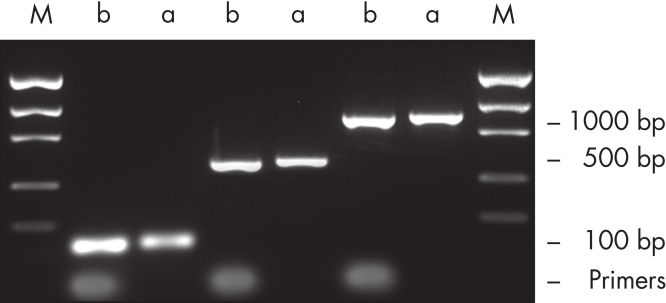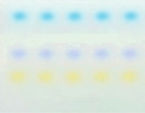✓ オンライン注文による24時間年中無休の自動処理システム
✓ 知識豊富で専門的な製品&テクニカルサポート
✓ 迅速で信頼性の高い(再)注文
特徴
- 非常に少量の溶出液量
- 迅速かつ簡単な操作
- 再現性と高い回収率
- サンプル操作を便利にするローディングダイ
製品詳細
MinElute PCR Purification Kitは、70 bp ~ 4 kbのPCR産物を精製するためにシリカメンブレンスピンカラム、バッファーおよびコレクションチューブで構成されます。スピンカラムは、非常に少量(10 μL)の溶出で濃縮DNAを高収率で得られるよう設計されています。オプションのpH指示薬で、スピンカラムへのDNA結合の至適pHを容易に確認できます。この作業は、QIAcube Connect上で完全自動化できます。
パフォーマンス
MinElute PCR Purification Kitは、PCR産物を精製するためのスピンカラムです。小型遠心機または真空マニホールドの使用で、高濃度のDNAフラグメント(70 bp – 4 kb)が迅速に得られます。(4 kbより大きいDNAフラグメントは、QIAquick PCR Purification Kitを使用して精製してください。)
図参照
原理
MinElute PCR Purification Kitは、高塩濃度バッファーでDNAを結合し、低塩濃度バッファーまたは水で溶出するためのシリカメンブレンです。シリカメンブレンは、緩い樹脂やスラリーに伴う問題や不都合がありません。
Gel loading dye
ローディングダイは、迅速で便利なサンプル処理と分析を可能にします。GelPilot Loading Dyeは、3種類のトラッキングダイ(キシレンシアノール、ブロモフェノールブルー、およびオレンジG)を含み、アガロールゲルのランタイムの最適化を容易にし、より小さなDNAフラグメントの過度な移動を防ぎます(「 GelPilot Loading Dye」の図を参照)。
図参照
操作手順
MinEluteシステムは、シンプルな結合-洗浄-溶出の操作です。結合バッファーをPCRサンプルまたは他の酵素反応液に直接添加し、その混合液をMinEluteスピンカラムにアプライします。結合バッファーはpH指示薬を含んでおり、DNA結合の至適pHを容易に確認できます( 「pH Indicator Dye」の図を参照)。核酸は、バッファーにより高塩濃度の条件下でシリカメンブレンに吸着します。不純物は洗い流され、純粋なDNAが、少量の低塩濃度バッファーまたは水と共に溶出し、後のアプリケーションですぐに使用できます。
取り扱い
MinEluteスピンカラムには、2通りの便利な取り扱い法が、設定されています( 「MinEluteの操作手順」のフローチャートを参照)。スピンカラムは、小型遠心機、あるいはQIAvac 24 Plusなどのルアーコネクター付きの真空マニホールドにフィットし、さらにQIAcube Connectで完全自動化できます(「スピンカラムの取り扱いオプション A および B」および「 QIAcube Connect」の図を参照)。
図参照
アプリケーション
MinEluteシステムで精製したDNAフラグメントは、以下を含むすべてのアプリケーションで使用できます。
- 次世代シークエンシングを含むシークエンシング
- マイクロアレイ解析
- ライゲーションと形質転換
- 制限酵素処理
- Labeling
裏付けデータと数値
効率的なプライマー除去。

Specifications
| Features | Specifications |
|---|---|
| Binding capacity | 5 µg |
| Sample type: applications | DNA、オリゴヌクレオチド:PCR反応 |
| Elution volume | 10 µl |
| Fragment size | 70 bp ~ 4 kb |
| Recovery: oligonucleotides dsDNA | 回収:オリゴヌクレオチド、dsDNA |
| Format | チューブ |
| Technology | シリカテクノロジー |
| Processing | Manual |
| Removal <10mers 17–40mers dye terminator proteins | 除去<40mers |












